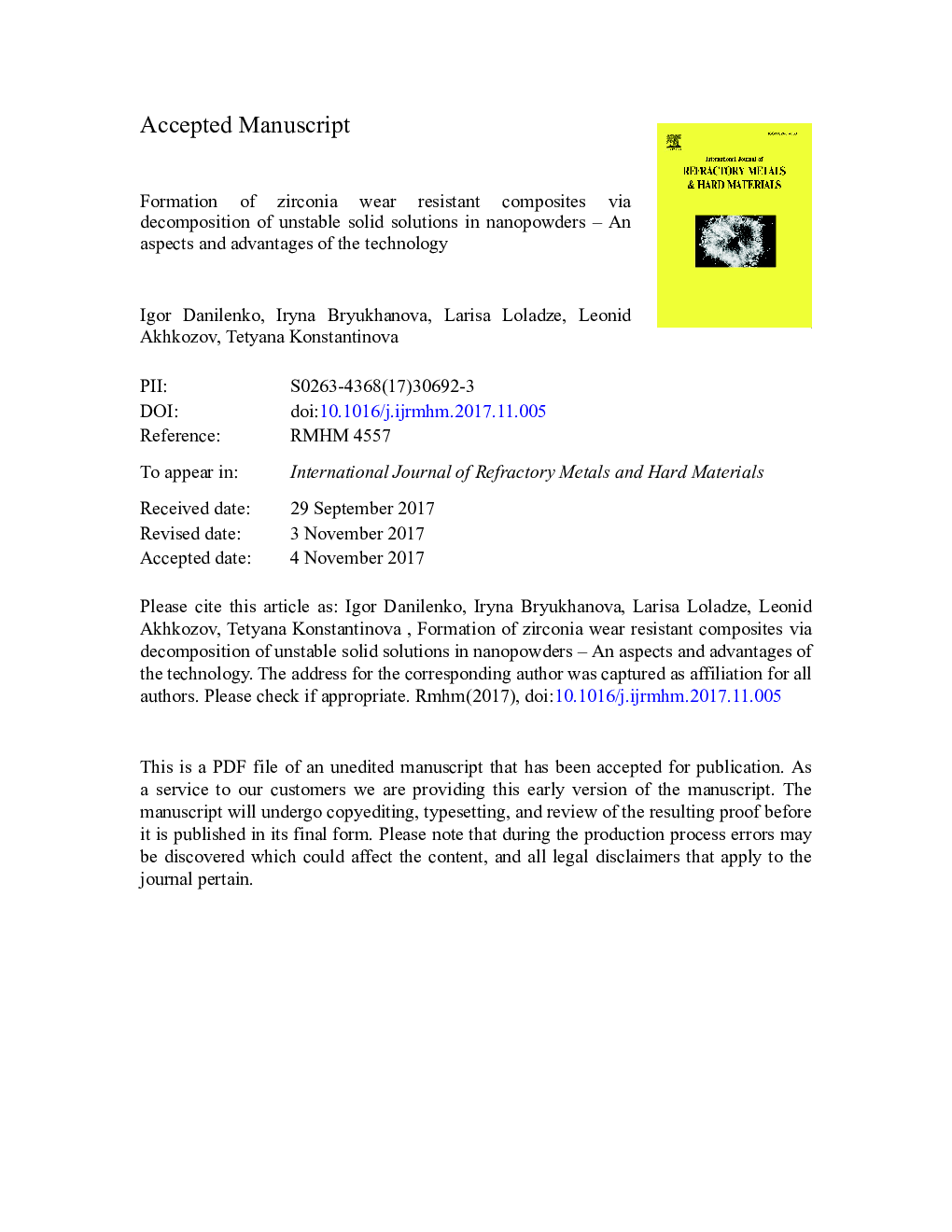| Article ID | Journal | Published Year | Pages | File Type |
|---|---|---|---|---|
| 7989838 | International Journal of Refractory Metals and Hard Materials | 2018 | 34 Pages |
Abstract
The present study is devoted to the problem of structure formation in zirconia ceramic matrix composites. In this paper we have analyzed the general features and distinguish behavior standard mixing and co-precipitation technology to obtain composite zirconia nanopowders. We appreciate the opportunity of co-precipitation technique for its application in the semi industrial production of zirconia powders for ceramic products with wide range of application: structural, wear-resistant, functional etc. It was shown that co-precipitation technique matches for synthesis of zirconia based composite nanopowders with predetermined chemical, phase and granulometric characteristics. It was shown that the mechanical characteristics and durability of zirconia based composites sintered from these nanopowders increase in comparison with materials obtained by standard technology. The formation of unstable solid solutions during synthesis of nanopowders and its controlled decomposition during sintering are the basic distinguish feature of co-precipitation method. These processes lead to the formation of different type of inclusions and changes in phase, chemical and granulometric compositions in matrix material as well as rearrangement of residual stresses fields occurs in composite material.
Related Topics
Physical Sciences and Engineering
Materials Science
Metals and Alloys
Authors
Igor Danilenko, Iryna Bryukhanova, Larisa Loladze, Leonid Akhkozov, Tetyana Konstantinova,
